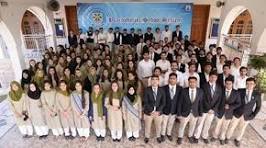blog 6 (Education in Sindh: A Look at Private and Public Schools)
Education in Sindh: A Look at Private and Public Schools
Sindh, the most urbanized province in Pakistan, has many challenges and opportunities in its education system. The Sindh Government recently released the Private Schools Census 2023, which gives us a clear picture of private schools. At the same time, public schools, especially at the primary level, also need attention. This blog provides an overview of both private and public schools in Sindh, sharing important facts and highlighting key issues.
Private Schools: Key Facts
The Private Schools Census 2023, presented by Sindh Education and Culture Minister Syed Sardar Ali Shah, shows that over 3.9 million students are studying in private schools in Sindh. This includes 1.8 million girls and 2.1 million boys in 11,736 active private schools. These schools provide jobs for almost 300,000 teaching and non-teaching staff.
The census data breaks down the private schools into different levels: 1,247 primary, 553 middle, 2,784 elementary, 6,546 secondary, and 606 higher secondary and A-O level schools. Most of these schools (10,776) teach in English, while 469 teach in Urdu and 491 in Sindhi.
During the census, officials visited 12,809 private schools and found that 1,073 were inactive. This data collection began in April 2022 and is the first of its kind for private schools in Sindh. Minister Syed Sardar Shah stressed the importance of accurate data to create good policies and address educational issues effectively.
Public Schools: Current Situation and Challenges
Public primary schools in Sindh face many challenges. In 2020, about 2.9 million children were enrolled in primary schools, but 44% of children were still out of school. This makes Sindh the second highest in out-of-school children after Balochistan.
Public primary schools also suffer from poor infrastructure and resources. There are about 78,000 teachers for 2.9 million students, resulting in a high student-to-teacher ratio. Nearly half of the primary schools have only one teacher, and there are roughly 76,000 classrooms, meaning there are about 41 students per classroom.
The Sindh Government increased the education budget from 244 billion to 262 billion PKR, with 14 billion allocated for development. However, more than 3,000 primary schools are set to be closed because they are not viable.
Several factors hinder quality education in public schools:
1. Lack of Basic Facilities: A local survey in 2021 found that about 80% of schools lack essential facilities like drinking water, electricity, washrooms, and sufficient furniture. This discourages students from attending school.
2. Poverty: High inflation and economic challenges force many parents to send their children to work instead of school. Pakistan ranks 92nd out of 116 countries in the Global Hunger Index 2021, highlighting the economic difficulties in Sindh.
3. Lack of Qualified Teachers: Many schools do not have qualified teachers. A 2021 survey found that 90% of schools do not have a science teacher, and many teachers are not adequately trained to teach the current syllabus.
4. Policy and Management Issues: Contradictory policies, ineffective experiments, communication gaps between educational authorities and the community, and political influence have historically hindered quality education.
Looking Ahead
The Private Schools Census 2023 is a positive step towards understanding and addressing the educational challenges in Sindh. Accurate data is crucial for making good policies. For public schools, improving basic facilities, training teachers, and addressing economic barriers are essential steps.
A commendable initiative by the Sindh Government is hiring over 50,000 teachers through the Institute of Business Administration (IBA) on merit. This move aims to improve the quality of education by ensuring qualified teachers are employed.
However, improving education is not just the government's responsibility. As teachers and parents, we must also step up and contribute. We need to be active in our communities, work with schools, and create a positive learning environment. By working together, we can bring meaningful change and ensure that every child in Sindh has access to quality education.


Comments
Post a Comment